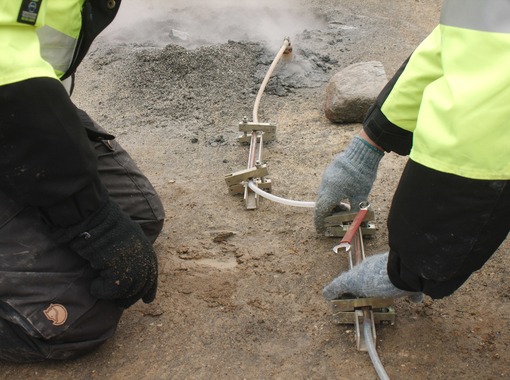An international group of scientists has shed new light on the origin of nitrogen on Earth. These results are discussed in an article in the latest issue of the prestigious journal Nature. Among the authors are Sæmundur Ari Halldórsson, scholar at the University of Iceland’s Institute of Earth Sciences and Andri Stefánsson, professor at the Faculty of Earth Sciences. The group comprised scientists from the USA, France, Canada, Italy and the UK.
The Earth’s atmosphere is 75% nitrogen. This element is also found in rocks that form the outermost layer of the Earth, the crust and much deeper in the mantle.
It is unknown how gasses like nitrogen behaved during the Earth’s formation, and how the Earth has maintained its reserve of volatile elements that make life possible. It has nevertheless been established that the nitrogen in the atmosphere can be traced to volcanic activity early in the history of the Earth. However, it is unclear whether the nitrogen found in geothermal and volcanic emissions today has its source primarily from within in the Earth, or whether it represents recycled nitrogen from the atmosphere. The goal of the study discussed in Nature was to seek answers to this question.
In the research samples of geothermal gas from three geothermally active areas, in Iceland, Germany and the USA, were used.

In order to shed light on this the group used a new method to analyse nitrogen isotopes, enabling them to distinguish between the two aforementioned sources of the element. In the research samples of geothermal gas from three geothermally active areas, in Iceland, Germany and the USA, were used.
The method could be used to predict volcanic eruptions
By using this new method, it proved possible to accurately identify the origins of the Earth’s nitrogen reserve. The group concluded that a large part of the nitrogen found in the Earth’s mantle has probably been there since the planet was formed, and that its influence can still be found in gas emitted from some geothermal and volcanically active areas on Earth.
This discovery is not only significant in the context of this particular study, because the method developed in it provides scientists with a new technology to more clearly distinguish between the atmosphere and volcanic gas during eruptions. A potential future use for the method is to monitor the activity of volcanoes because the composition of gasses emitted from volcanoes prior to eruptions changes slightly. Thus changes in the proportion of mantle nitrogen and atmospheric nitrogen might be a harbinger of volcanic eruptions.




